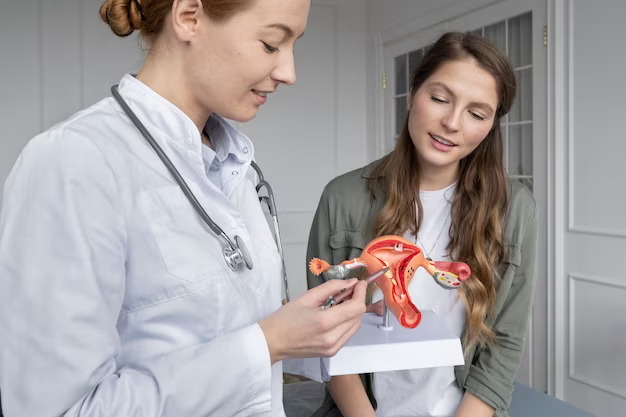Abortion is a complex and sensitive topic that raises ethical, moral, and medical questions. In the United States, various types of abortions are performed, each with its own procedures, risks, and recovery processes. When considering an abortion, it’s crucial to have comprehensive information to make an informed decision. While consulting with a healthcare professional is essential to determine the best type of abortion for an individual’s situation, understanding the available options is equally important. This article aims to provide a detailed overview of different types of abortions. Each method will be explored in terms of how they are performed, associated discomfort, recovery time, and effectiveness.
Early Non-Surgical (Medical) Abortion – Also referred to as the “Abortion Pill”
This abortion procedure involves a combination of two different medications, mifepristone and misoprostol. These medications collaboratively terminate the pregnancy.
The procedure involves an initial ultrasound to ascertain the term of the pregnancy and confirm the absence of an ectopic pregnancy (where the pregnancy is in the tubes rather than the uterus). The first medication, mifepristone, is then administered. It works by blocking the hormone progesterone, which is essential for the growth of the pregnancy.
The second medication, misoprostol, is taken approximately 24 to 48 hours after the first one. This medication induces contractions in the uterus, leading to cramping and bleeding, thus expelling the pregnancy from the body. This process is akin to a miscarriage, and the effects of the medication can be observed anywhere from 30 minutes to 24 hours post-administration.
A medical abortion can be carried out at any time within the first 10 weeks of pregnancy. The procedure is most effective and causes the least bleeding when conducted earlier in the pregnancy term.
It is typical to experience heavy bleeding for several hours post-procedure, with period-like bleeding continuing for an average of two weeks. Most women also experience strong cramps, though over-the-counter medication can generally alleviate the pain.
Medical abortions have proven to be effective in 92% to 98% of cases, with the success rate being higher the earlier in the pregnancy they are performed.
Manual Vacuum Aspiration and Vacuum Aspiration
Manual Vacuum Aspiration, often performed under local anesthesia, is a commonly adopted method for abortions. In this process, a speculum, a basic instrument that makes certain parts more accessible for observation, is inserted into the woman’s vagina and cervix.
Following this, a slender tube linked to a handheld syringe is introduced into the womb through the cervix. The healthcare professional then operates the syringe to create a suction effect, removing the tissue from the uterus. This is known as Manual Vacuum Aspiration. In some cases, a mechanized suction device may be employed instead, in which case, the process is simply referred to as Vacuum Aspiration.
While undergoing Vacuum Aspiration, a contraction of the uterus is expected, leading to a sensation of cramping in many women. As the tube is removed, these cramps often lessen. Some women might experience sweating, nausea, or a faint feeling during the procedure.
- Anticipated Pain and Discomfort During Vacuum Aspiration: In the initial two weeks following a Vacuum Aspiration procedure, irregular bleeding or spotting is common among most women. Cramps that are similar to those experienced during a menstrual cycle may persist for a few hours to a couple of days, as the uterus recuperates and reverts to its original size;
- Efficiency of Vacuum Aspiration: Vacuum Aspiration is a proven safe and effective method for abortion, with minimal risks or potential complications attached to the procedure.
Dilation and Curettage (D&C)
Dilation and Curettage, commonly known as D&C, is a procedure that involves expanding the cervix (dilation) and carefully scraping the uterine lining (curettage) with a specialized instrument. The procedure is typically conducted in an outpatient surgical center or clinic under the administration of a local anesthetic. It might be combined with vacuum aspiration to ensure the complete removal of all pregnancy tissues.
- Timeframe for Dilation and Curettage: A D&C can generally be performed within the 2nd to 12th week of gestation, making it a viable option for individuals in the initial months of their pregnancy;
- Discomfort and Pain Post-Procedure: As with most surgical procedures, a D&C can cause some discomfort and pain. Following the process, women may encounter irregular bleeding or spotting for up to two weeks. Cramping, akin to menstrual discomfort, can persist for several hours to a few days as the uterus heals and regains its pre-pregnancy state;
- Efficiency of Dilation and Curettage: Dilation and Curettage is a recognized and effective method for abortion, presenting minimal chance for potential complications or risks.
Dilation and Evacuation (D&E)
Dilation and Evacuation (D&E) is a procedure that uses aspiration as well as specialized tools, including forceps, to remove pregnancy tissue from the uterus. In this slightly more complex procedure, the cervix needs to be widened enough to allow for the removal of larger pregnancy tissue.
To accomplish this, the cervix is made softer and dilated ahead of time. The dilation process can range from a few hours in the early weeks of the second trimester to up to two days in the later part of the trimester.
- Appropriate Timing for Dilation and Evacuation: Typically, D&E is performed during the second trimester of pregnancy, specifically between 13th and 24th weeks;
- Pain and Discomfort with Dilation and Evacuation: Because D&E is a bit more complex, medical professionals may suggest stronger pain medications or sedatives, in addition to local anesthesia, to manage pain and discomfort during and after the procedure;
- Efficiency of Dilation and Evacuation: D&E is a trusted and reliable method for performing second-trimester abortions. It is considered safe, effective, and is the method of choice for most second-trimester abortions in the United States.

Labor Induction (also called induction abortion)
Labor induction, also known as induction abortion, is a method used to terminate pregnancies later in gestation.
When Can an Induction Abortion be Performed?
This method is typically performed during the second and third trimesters of pregnancy.
Pain and Discomfort Associated with Induction Abortion
Labor induction may involve stronger and more prolonged contractions compared to earlier methods, leading to increased discomfort. Pain management options are available to help alleviate discomfort during the process.
Effectiveness of a Labor Induction Abortion
Labor induction is an effective method for terminating pregnancies later in gestation, with success rates comparable to other surgical methods.
Hysterotomy (similar to a C-Section)
Hysterotomy is a surgical procedure similar to a Cesarean section, involving an incision in the abdomen and uterus to remove the contents of the uterus.
When Can a Hysterotomy be Performed?
This method is typically reserved for specific medical situations, such as late-term pregnancies or when other methods are not feasible.
Pain and Discomfort Associated with Labor Induction
Recovery from a hysterotomy may involve more discomfort and a longer recovery period compared to other methods due to the surgical nature of the procedure.
The Effectiveness of a Hysterotomy
Hysterotomy is a highly effective method for terminating pregnancies in specific medical circumstances, with success rates comparable to other surgical methods.
Conclusion
In conclusion, the decision to undergo an abortion is deeply personal and should be made with careful consideration and access to accurate information. Understanding the different types of abortions, their procedures, associated discomfort, recovery times, and effectiveness is crucial for making an informed choice. Consulting with a healthcare professional is essential to determine the most suitable method based on individual circumstances and gestational age. It is important to remember that regardless of the chosen method, seeking support and care from qualified healthcare providers is vital for ensuring a safe and healthy process.



